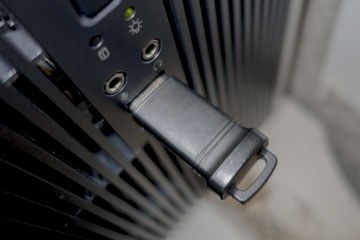Design Consideration: Cycle Life of Connectors
Jul 21, 2015
Article
 A while ago, I experienced firsthand the importance of connector cycle life. I made a late-night run into a local supermarket to print some photos for a family event that was taking place the next day. I loaded the photos onto a USB flash drive, but when I plugged the drive into the self-service photo kiosk, something felt wrong. As I inserted the drive, the connection felt very loose and sloppy. Panic began to set in when the kiosk didn’t seem to detect that I had inserted a flash drive. I removed and re-inserted the drive, but the kiosk still did not “see” my flash drive. I started to investigate the connection and was shocked at how much play was in this connector. It was clearly worn out or damaged. Fortunately, I was able to make a connection by holding the flash drive up at about a 30-degree angle. I had to hold the drive in that position with one hand while I operated the touch screen with the other hand. While I’m sure I looked a bit silly, it did allow me to get my pictures printed.
A while ago, I experienced firsthand the importance of connector cycle life. I made a late-night run into a local supermarket to print some photos for a family event that was taking place the next day. I loaded the photos onto a USB flash drive, but when I plugged the drive into the self-service photo kiosk, something felt wrong. As I inserted the drive, the connection felt very loose and sloppy. Panic began to set in when the kiosk didn’t seem to detect that I had inserted a flash drive. I removed and re-inserted the drive, but the kiosk still did not “see” my flash drive. I started to investigate the connection and was shocked at how much play was in this connector. It was clearly worn out or damaged. Fortunately, I was able to make a connection by holding the flash drive up at about a 30-degree angle. I had to hold the drive in that position with one hand while I operated the touch screen with the other hand. While I’m sure I looked a bit silly, it did allow me to get my pictures printed.
This event got me thinking about the topic of connector cycle life. Because most USB Type A connectors are only rated for 1,500 insertion-removal cycles, I wondered if the engineers of the photo kiosk machine considered this. Since supporting USB flash drives was a market requirement, they had to use a USB Type A connector. Knowing that the connector would likely hit 1,500 cycles long before the kiosk would need to be replaced, I wonder if they had planned on replacing the USB connector as part of a routine maintenance plan, and if so, how would this be done? Did they use a panel-mount connector that could be quickly changed out? Would someone at the store do that or would a technician from the kiosk company be sent out into the field to service the unit? Or would the store need to crate-up and send the kiosk in for servicing?
 This event reminded me of a similar problem that an engineer relayed to me at a trade show a few years ago. The company he worked for made machines that performed corrective eye surgery. One machine measured the eye and another was used for the surgery. The data from the first machine could be transferred to the second either by network or by USB flash drive. Just like the photo kiosk machine, the USB connector eventually had problems, but unlike the photo kiosk, this machine didn’t have to use the USB Type A connector. I explained to the engineer that our Datakey SlimLine™ receptacles are rated for 50,000 insertion-removal cycles. That’s more than 33 times more than the USB Type A connector’s cycle life. Also, our UFX RUGGEDrive™ memory token provides USB flash drive functionality. The UFX memory token also has security features that can be used to protect patient data should the device ever be lost or stolen.
This event reminded me of a similar problem that an engineer relayed to me at a trade show a few years ago. The company he worked for made machines that performed corrective eye surgery. One machine measured the eye and another was used for the surgery. The data from the first machine could be transferred to the second either by network or by USB flash drive. Just like the photo kiosk machine, the USB connector eventually had problems, but unlike the photo kiosk, this machine didn’t have to use the USB Type A connector. I explained to the engineer that our Datakey SlimLine™ receptacles are rated for 50,000 insertion-removal cycles. That’s more than 33 times more than the USB Type A connector’s cycle life. Also, our UFX RUGGEDrive™ memory token provides USB flash drive functionality. The UFX memory token also has security features that can be used to protect patient data should the device ever be lost or stolen.
If you have an embedded design project in your future, be sure to consider connector cycle life. How long it will take to reach the rated cycle life of the various connectors used, and what is the plan for replacing connectors that may wear out before the rest of the system? If the system needs to support removable memory, consider whether a more robust solution, like our RUGGEDrive product line, might be a more prudent choice than consumer alternatives.
Paul Plitzuweit
Senior Product Manager - Datakey, ATEK Access Technologies, LLC